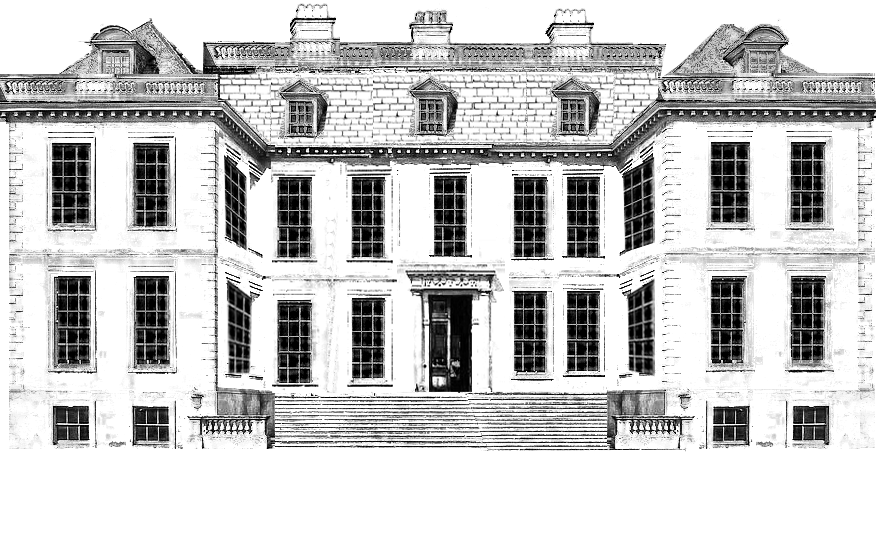
Why the Divya Co-Publishing Model is Unique
Why the Divya Co-Publishing Model is Unique
I want to start this article with an excerpt from the transcript of a video on You Tube called How much money can you make from a children’s Book by Christyan Fox. Christyan is an author, illustrator and author coach, who I have never met or spoken with. I have put the link to the video below the transcript excerpt.
The reason I am including this transcript is that I have provided a lot of information on this website and while everything I have written is based on research and is factual, you may think I am biased and only show you the worst case scenarios. However, many other people with experience in this industry confirm what I tell you, Christyan is one of them.
I will comment on some of his points below.
Excerpt from the YouTube Video: How much money can you make from a children’s Book by Christyan Fox
“So let’s start with the traditional route, let’s start with mainstream publishing and what you’ll typically be offered there and then we’ll cover the other areas in a minute.
So, you’ve submitted your manuscript if you’re a writer, or your book dummy if you’re an illustrator, to a publisher. They like it, they want to go ahead with it, they want to offer you a contract.
You’ll be offered a sum of money as an Advance.
Now the advance is called an advance because it’s a payment in advance of future sales. It’s in advance of those royalty payments you receive annually or six monthly on sales. The advance they offer you is non-refundable.
Now that’s important to bear in mind, because if the publisher decides to not go ahead with the book, or if they never sell a single copy of that book, your advance is non-refundable by you to them.
That’s for you to live on, so you want to try and get as much as possible in advance.
Now typically you’ll be offered anything from a thousand pounds, or a thousand dollars at the very lowest end, and up to ten thousand dollars or pounds at the highest end as a fledgling writer or illustrator.
Most typically it might be anything between around three to five thousand, it doesn’t matter about the dollars or pounds, they seem to be pretty much the same.
Now a lot of publishers are offering as little as a thousand pounds or dollars. One of my students was offered a zero advance. My agent at the time, thought this was appalling and a really underhanded trick. Since then I’ve heard of other cases of publishers offering as little as a zero advance. They just offer no advance at all.
Now that’s not necessarily because they’re trying to cheat you out of money, that’s usually because it’s a smaller publisher who just doesn’t have the kind of cash reserves to put up to give you an advance. They’re trying to save whatever they can, wherever they can.
Now long term it doesn’t matter whether you get zero up front because the way it works is, you get a sum of money in advance, once your book has earned back that sum of money and goes into profit you will receive royalties. So in the long term you’ll receive exactly the same. But you need that advance to live on.
And the book might not sell well, it might not ever earn back its advance so you really could do with getting as much as possible up front.”
You can view the full video here: https://www.youtube.com/watch?v=4L_JNUKqyw0&t=529s
Editor’s Note: I have edited the script slightly by deleting some repeated comments, highlighting and making it more readable as text.
Christyan Fox has explained how cash advances work, but there are a couple of things he could have added, which I will now tell you. However, his explanation of the Traditional model is good enough for me to compare it to our Co-Publishing model.
Christyan places great emphasis on the author getting as big an advance as possible, first because “That’s for you to live on” and second, because that may be the only money you ever receive.
The problem is, even if the author receives the maximum $10,000 advance, the publisher makes the payment in three tranches as I explained in The Publishing Industry is Booming while Authors are going Broke. That means each tranche is $3,333 less any deductions. If the author gets a $1,000 or $5,000 advance, that works out to between $333 to $1,666 per tranche. I wonder how any author could live on any of those amounts.
However, his second point really hits home. “That may be the only money the author ever gets”.
Our Co-Publishing model addresses these issues, along with some other issues that Christyan raises later in the video and some he does not address.
Comparing the Traditional cash Advance Model
with the Unique Divya Advance Model for Authors.
As Christyan points out, many publishers are trying to save money by reducing advances to the lower limits or moving to a zero advance. That means the author gets no upfront payment. I don’t agree that only applies to the smaller publishers. However, whatever the advance, it is normally not enough to live on.
I view these advances in the same manner as headlines on the Internet that make exaggerated claims to get readers to click on them. They are called “Click Bait”. The advances publishers offer are “Author Bait” designed to get needy authors to sign over their creative work for very little money and the likelihood is, that will be all they ever get.
Why do authors rarely earn more than the advance they get?
There are three major reasons.
- The royalty they receive, typically between 2.5% and 5%, is so low it is hard for them to sell enough books to pay back the advance.
- The publisher rarely does any marketing or promotion of the book other than at the launch of the book and authors don’t have the time, experience or money to do it themselves.
- There are rarely any additional sources of income created to complement the book and earn additional income for the author.
At Divya Publishing we started by addressing these important issues and that led to many others we felt also needed to be included in our new author centric approach to helping authors be successful.
How the Divya Publishing Advance Model Works
As I have explained here and in other articles, the cash advance most authors receive is not enough to live on, so they have to supplement their income with either full or part time work to pay their bills. Second, there is not enough help provided to most authors to market their book, including setting up the most necessary component, a website.
And finally, publishers do not create derivative or complementary products based on the book to help the author generate additional income streams from their work. If approached by third parties who want to create derivative products, publishers may grant them a licence to do so. Publishers usually grant a license to third parties to create derivative products, and the author negotiates the percentage they receive from these products if the opportunity arises. Most often, this would be for toys or the movie rights to a book. Illustrated books, such as children’s books or comics, may provide other opportunities, as Christyan explains in his video.
The financial advance most authors receive is useless other than in the very short term. They still need to supplement their income with one or two jobs. We also acknowledge that most authors never earn more than their advance, but in our opinion, this is largely because of points 2 and 3 above; the lack of any ongoing promotion and no additional sources of income derived from the original work.
To address these issues, we designed a unique alternative; we call it our Co-Publishing model and that is part of our Author Centric Approach. Here’s how they work.
Every Author and Every Book is Unique
Our starting point is that every book deal is unique. However, many components needed to make a book successful are very similar, such as the requirement to have a website and a marketing campaign. Derivative products vary according to the work and whether it is fiction or non-fiction.
That’s why we don’t have a “one size fits all” model like traditional publishers. We look at each author and their book and determine what the best plan is for that book.
Our initial concern is, what do we need to do to get the book to best-seller status? Once we achieve that goal, we can include that in all future promotions. A major component in achieving this first goal is to attract as many genuine testimonials as possible.
It’s obvious to achieve this mile-stone requires some investment including but not limited to the following:
- Designing the book cover and back page.
- Designing the layout of the book.
- Setting up an author’s website and posting articles, videos, interactive content and more.
- Creating a mailing list and mailing to subscribers regularly.
- Creating landing pages that entice readers to subscribe to the mailing list including free gifts.
- Creating landing pages to sell the book.
- Setting up the initial social media accounts and author pages.
- Conducting social media campaigns.
- Developing a branding campaign for the author.
Taking all the above into consideration, we made our first major decision. It is more important to do them than give the author a useless advance, which they will spend quickly and still need to work to live.
We decided the best way to use the advance is to apply it to the tasks that will make the author more money. Those tasks I have listed above and more.
We will disclose the amount of the advance, in dollar terms, to the author after evaluating the book and the author’s plans for future books. Once we have agreed on the advance, the author has the option to release it to the public in our Press Release.
However, I can say, it will never be zero and it will usually be higher than the average amount traditional publishers regularly offer. As Christyan pointed out, the amount of the advance is irrelevant to the ultimate amount the author receives. In fact, they receive a royalty on every book sold from the first book. The big difference with our system is, with the extra promotion we do, they will sell more books than they would under the traditional publishing model and they will sell them for a longer period, perhaps years longer.
The second component of our Co-publishing model is the royalty. Once again, we believe the royalty offered by large and small publishers is too low. It makes it hard for the author to earn a reasonable income unless the book is a tremendous success.
Even if the book is a huge success, why should the author accept a low 2.5% or 5% royalty rate? Alternatively, if they are already a successful author or a celebrity, maybe they have negotiated a higher rate, such as 10% or 12%. But is that enough? A best seller is good for the publisher and the author.
We then negotiate a plan with the author for their contribution as co-publisher. This can be a monthly or annual amount that makes up the difference. The co-publisher contribution goes into our calculation for the royalty rate they receive.
The important thing is, we have learned from years of experience in other industries, that if people have skin in the game, a vested interest in making the project successful, it not only runs more smoothly, it is more likely to be successful. When someone has nothing to lose, their motivation often disappears when there is work to be done.
Finally, we have one more unique component that makes this model better for the author. This is how the Co-Publishing model got its name. Once we work out what we plan to do, initially and in the future, we cost it. Then we use a proportion of the advance on a monthly basis towards paying for the work I listed above and whatever else we do.
What do we expect from the author?
The obvious question you probably have is, if you are doing all the things you listed above and more, what do you expect me to do?
It’s a good question, but there are things only you can do because you are the author, the star of the show, the person the fans want to communicate with, the person they have a relationship with. We set the stage and make it easier for you and we advise you, but, you are the only one people want to know. If you are a non-fiction writer, you are the expert, our job is to make that known. If you write fiction, you are the creative mind behind the book or books. We promote you.
In my other articles, for example Write to Win, I have outlined strategies such as brand building, which includes replying to comments or questions. While we can write articles for your website, you also need to write some, especially those that detail background to your book or talk about the characters and future sequels or new books you are planning, etc.
Being on social media is important, thanking people for their comments and answering questions.
We may organise radio or TV interviews only you can do. All these things are a lot easier for you to do because we do the tech work such as creating your website, protecting it from hackers, adding interactive content (which you would also have input into) making videos, some with you in them and some that are faceless, etc.
Our philosophy is, being a successful author takes a lot more than writing a good book. Whether you are writing for the money or the kudos, marketing and all that entails is a big part of the journey to success.
Our Author Centric approach puts you in the centre of the action. We promote your brand, your book, and you as an author. We are the logistics team that builds and maintains the infrastructure you need to communicate with your readers. Our Co-Publishing model divides the jobs and delegates to us what would normally hold you back and give you the time to be the star. Together, we will get you to where you can earn a full-time income from your passion to be a writer.
This article outlines what Co-Publishing looks like, and how we can help you achieve your goal. If you have questions you can enter them in the contact us form at the bottom of the page or email us and we will reply to you and if relevant to others, add them to the FAQ page.
We are available to chat on Skype, Facebook Messenger, Zoom or WhatsApp or send us your phone number and we will call you.






mffuo5